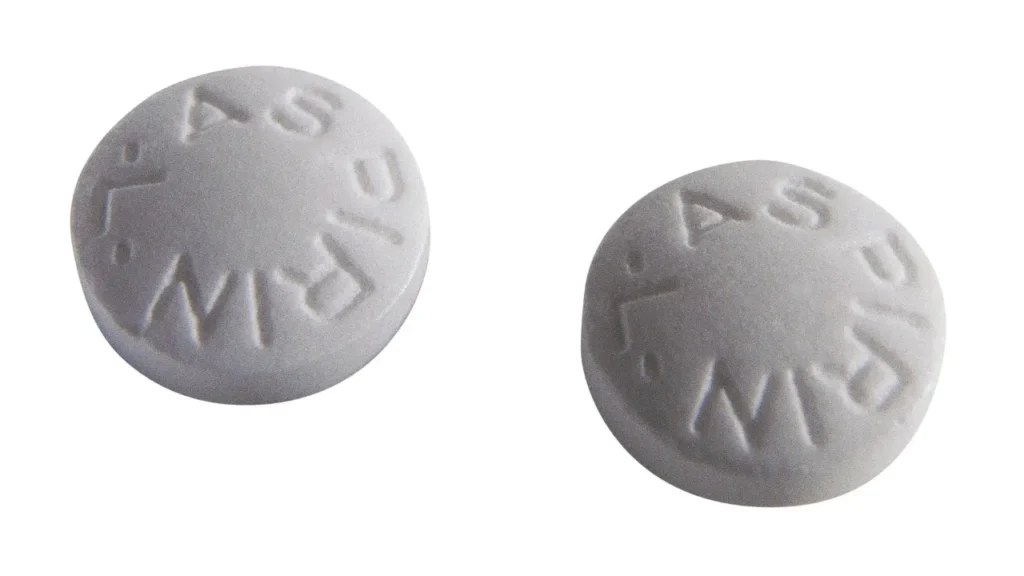With potential benefits in the areas of medicine and health supplements, serrapeptase—a serine protease enzyme—has attracted a lot of attention. It comes from the non-pathogenic enterobacteria Serratia E15. Originally from the silkworm’s digestive tract, nature uses it to break down the cocoon and make it easier for the moth to escape. There is a possibility that this distinct mode of action could aid in the decomposition of inanimate objects, lessen inflammation, and aid in the healing process when applied to human therapy.
Attempting to offer a thorough guide for the safe use of serrapeptase, this article explores the chemistry of the enzyme, its physiological mechanisms, ideal dosages, adverse effects, and substance interactions, as well as the implications for improving alertness, attention, and cognition.
You May Also Like:
What Are the Best Mushrooms for Brain Health? Here Are the Facts.
Dr Emil Nutrition Lion’s Mane Reviewed: A Leading Nootropic Mushroom Product
Serrapeptase: Benefits, Dosage, Side Effects, Drug Interactions, And Other Important Information is an original (NootropicsPlanet) article.
Nature of Serrapeptase
Serrapeptase, often referred to as serratiopeptidase in science, is a proteolytic enzyme that breaks down proteins. It is generated by the bacteria Serratia sp. E-15, which was first discovered in the intestines of silkworms. The cocoon walls that the silkworm must dissolve in order to transform into a moth are broken down by this enzyme. Its capacity to break down inanimate materials without causing damage to living tissues attracted the attention of scientists, which resulted in its separation and subsequent application as an anti-inflammatory and dietary supplement.
In terms of chemistry, serrapeptase is a complicated enzyme that functions by cleaving particular peptide bonds in other proteins, especially those found in dead or injured tissue, as well as in mediators of inflammation. This selective activity allows for the removal of necrotic tissue and the reduction of inflammation without impacting healthy tissue, a feature that underpins its therapeutic applications.
Health Benefits of Serrapeptase
Serrapeptase has been attributed with several health benefits, primarily linked to its anti-inflammatory, anti-edematous (preventing swelling), and fibrinolytic (breaking down fibrin) properties. Below are key areas where serrapeptase has been found to offer potential health benefits:
- Reduction of Inflammation and Pain: Serrapeptase can reduce the symptoms of inflammation, such as pain, swelling, and redness, making it beneficial for conditions like arthritis, sinusitis, and other inflammatory diseases. By modulating the body’s inflammatory responses, it can also contribute to pain relief, particularly in post-operative scenarios and in chronic inflammatory conditions.
- Improvement in Circulatory Health: By breaking down fibrin, a protein involved in blood clotting, serrapeptase may help improve blood flow and reduce the risk of clots, contributing to cardiovascular health. This fibrinolytic activity may also aid in the prevention and treatment of conditions like varicose veins and atherosclerosis.
- Enhancement of Mucolytic Activity: Serrapeptase helps break down mucus, facilitating its clearance from the respiratory tract. This property makes it a valuable adjunct in managing conditions such as chronic bronchitis, sinusitis, and other respiratory illnesses where mucus buildup is a problem.
- Support for Wound Healing and Tissue Repair: By removing dead or damaged tissue and reducing swelling, serrapeptase can support the body’s wound healing processes. This effect is beneficial not only in post-operative care but also in the treatment of burns, trauma, and other conditions requiring accelerated tissue repair.
- Potential Benefits for Mental Clarity and Cognitive Function: Although direct research is limited, the systemic anti-inflammatory effects of serrapeptase could theoretically contribute to improved mental clarity and cognitive function. Inflammation is known to affect cognitive health, and by reducing systemic inflammation, serrapeptase might indirectly support brain health and cognitive performance.
There are numerous health advantages associated with serrapeptase due to its proteolytic nature, which enables it to break down dead or inflammatory tissue while sparing healthy cells. Serrapeptase is a potentially beneficial natural supplement with benefits that include lowering pain and inflammation, enhancing respiratory and circulatory health, and possibly even aiding cognitive function. Serrapeptase must be used responsibly, in accordance with recommended dosages, and with knowledge of any possible interactions and negative effects. As with any supplement, this should ideally be done under a doctor’s supervision.

Chemistry of Serrapeptase
The proteolytic enzyme serrapeptase, sometimes referred to as serratiopeptidase, is generated in the intestines of silkworms by the bacteria Serratia E15. In its role as a protease, it works by catalyzing the breakdown of peptide bonds—the chemical connections that join the amino acids in a protein. The function of the enzyme is ascribed to its capacity to cleave these bonds specifically, especially those found in fibrous proteins like fibrin, a vital constituent of scar tissue and blood clots.
The intricate sequence of amino acids that makeup serrapeptase’s molecular structure folds into a particular three-dimensional shape. Its enzymatic activity depends on this spatial arrangement, which allows the enzyme to interact with its particular substrates—proteins that must be broken down. The enzyme’s peptide bond is broken down by the addition of a water molecule (hydrolysis) in a biochemical reaction that is facilitated by the active site, a particular location on the enzyme’s structure.
Chemically speaking, serrapeptase is identified by the presence of a serine residue at the active site, which is a feature shared by serine proteases. This residue is essential to the catalytic action of the enzyme because it attacks the substrate’s peptide bond as a nucleophile, causing the substrate to cleave.
The specificity of serrapeptase for certain types of peptide bonds, particularly those in fibrous proteins, underpins its therapeutic applications, including its anti-inflammatory, anti-edematous, and fibrinolytic effects.
Physiological Mechanism of Action of Serrapeptase
The physiological impact of serrapeptase is multifaceted, primarily emanating from its proteolytic activity. Upon oral administration and subsequent absorption into the bloodstream, serrapeptase operates systemically, targeting fibrous proteins and inflammatory mediators throughout the body.
- Anti-inflammatory Action: Serrapeptase helps reduce inflammation by breaking down substances in the inflamed areas that contribute to pain and swelling. This includes the breakdown of bradykinin, a peptide that induces inflammation and pain. By facilitating the removal of inflammatory mediators and fluid accumulation (edema), serrapeptase can alleviate pain and promote faster recovery from injuries or surgery.
- Fibrinolytic Activity: Serrapeptase exhibits fibrinolytic properties, meaning it can dissolve fibrin, a protein involved in blood clotting and scar tissue formation. This activity is beneficial in conditions characterized by excessive fibrin deposition, such as cardiovascular diseases, where it may help prevent atherosclerotic plaque formation, and in post-operative healing, by reducing scar tissue.
- Enhancing Antibiotic Efficacy: Interestingly, serrapeptase can improve the efficacy of antibiotics in treating infections. By breaking down biofilms, protective layers produced by bacteria to shield themselves from antibiotics, it allows for greater penetration of antibiotics into the infected tissues.
- Mucus Clearance: In respiratory conditions, serrapeptase assists in mucus clearance by thinning and breaking down mucus secretions. This action facilitates easier breathing and the removal of mucus, which may harbor bacteria and other pathogens.
The systemic enzymatic activity of serrapeptase, therefore, contributes to its therapeutic effects, including anti-inflammatory, fibrinolytic, and mucolytic actions. These mechanisms, working in concert, underpin the health benefits attributed to serrapeptase, offering potential relief in various conditions characterized by inflammation, excessive fibrin formation, and mucus production.


Optimal Dosage of Serrapeptase
The ideal serrapeptase dosage varies greatly based on the ailment being treated, the patient’s health, and the particular supplement composition. The usual range of dosages is 10 mg, three times daily. However, greater dosages are reserved for emergency situations and should be taken under medical supervision. The bottom end of this range is typically advised for general anti-inflammatory and cognitive benefits. It’s critical to begin with the lowest effective dose and increase it gradually as needed while working with a healthcare provider.
Side Effects of Serrapeptase
When taken within the authorized dosage range, serrapeptase is generally regarded as safe. However, adverse reactions are possible, particularly at higher dosages. These include nausea, diarrhea, gastrointestinal distress, and allergic reactions in those who are vulnerable. There is a theoretical risk of increased bleeding due to its fibrinolytic activity, especially in persons with bleeding problems or those taking anticoagulant medicine.
Potential Substance Interactions of Serrapeptase
Because of how it works, serrapeptase may interact with drugs that thin the blood, like aspirin or warfarin, and raise the risk of bleeding. It might also interact with anti-inflammatory medications, either amplifying their effectiveness or raising the possibility of adverse consequences. Because there isn’t much information available regarding certain drug interactions, you should always speak with a doctor before taking serrapeptase together with other prescription drugs or dietary supplements.


Best Responsible Use of Serrapeptase
Serrapeptase supplementation can improve alertness, focus, and cognitive function, but it must be used carefully if this is something you’re interested in. This means taking into account the time of administration—some people advise taking it on an empty stomach for best absorption—as well as following suggested dosages and keeping an eye out for any negative effects. A healthcare provider’s advice and any possible interactions with other supplements or prescriptions should also be taken into account.
Serrapeptase:
Conclusion
Serrapeptase is a potentially useful enzyme in medicine and health supplements with a wide range of applications. Derived from the silkworms’ digestive system, it has a unique and special capacity to break down proteins. It may be useful for wound healing, inflammation reduction, and even cognitive function enhancement, despite mainstream medicine marking it as less effective than originally thought before 2011.
But appropriate use is crucial, requiring that prescribed dosages be followed and that users be informed of any possible side effects and drug interactions. Although more investigation is necessary to completely understand serrapeptase’s therapeutic range, it is a notable contender for enhancing many facets of human health and wellbeing.


References:
- Serrapeptase: Frequently Asked Questions Answered. Retrieved from: https://www.yashodahospitals.com/medicine-faqs/serrapeptase/
- What Is Serrapeptase? Retrieved from: https://www.verywellhealth.com/serrapeptase-89513
- Serrapeptase. Retrieved from: https://www.drugs.com/npp/serrapeptase.html
Important Note: The information contained in this article is for general informational purposes only, and should not be construed as health or medical advice, nor is it intended to diagnose, prevent, treat, or cure any disease or health condition. Before embarking on any diet, fitness regimen, or program of nutritional supplementation, it is advisable to consult your healthcare professional in order to determine its safety and probable efficacy in terms of your individual state of health.
Regarding Nutritional Supplements Or Other Non-Prescription Health Products: If any nutritional supplements or other non-prescription health products are mentioned in the foregoing article, any claims or statements made about them have not been evaluated by the U.S. Food and Drug Administration, and such nutritional supplements or other health products are not intended to diagnose, treat, cure, or prevent any disease.
